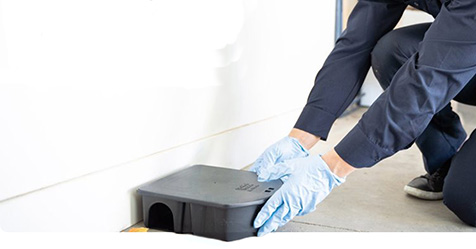Most Americans spend as much as 90% of their time indoors. In office buildings, health care facilities, commercial properties, and rental housing units, facility managers are responsible for ensuring optimal indoor air quality for the health, comfort, and productivity of the building’s occupants. They must choose a solution that is both effective at controlling odor and safe for those inside the building.
Be proactive
We notice odors when the structural characteristics of their molecules stimulate the body’s olfactory sensory cells, which are responsible for processing smells. No one likes unpleasant odors, and facility managers who fail to take a proactive approach to odor control run the risk of receiving complaints from their tenants, occupants, and guests. Persistent odor issues also can lead to negative customer reviews, loss of current and potential tenants, pest infestations, and even lawsuits or disputes.
Start at the source
Building odors may originate from multiple sources. Understanding where odors come from and what is causing them is an essential first step to treating them.
When identifying odor sources, facility managers can start out focusing on restrooms, kitchens and cafeterias, gyms and exercise rooms, and trash rooms. Odors can emanate from various surfaces such as hard floors, carpets, and upholstered furniture, as well as the air. If your building allows pets, animal-related odors may also be of concern.
Find your solution
After determining the cause of the odor, the next step is to identify the odor removal solution. Bringing an odor-control partner on-site will help you identify the right solution and confirm you’re actually treating the odor rather than masking it.
Consider the variety of odor-control dispersion systems and options available.
Air and surface sprays
Air and surface sprays treat smells from fabrics, surfaces, and indoor air. These products are ideal for fast, targeted odor control in any space and they are easy for cleaning staff to transport from room to room to use as needed.
Carpet and upholstery additives
Carpet and upholstery additives neutralize deep-set odors in fabrics and carpets. The porous fibers in carpet and furniture absorb smells, making the odors more stubborn to control than those on other surfaces. These additives require a special truckmount or portable cleaning system to use.
Mobile and stationary equipment
Odor-removing equipment is useful when working in both large commercial spaces and compact areas. Handheld units are ideal for smaller areas, including rental vehicles, hotel rooms, and rental properties. Mobile carts can tackle odors in larger spaces, including hallways, dormitories, locker rooms, and office buildings. Stationary units provide odor control in compact areas that consistently experience odor, including dumpster rooms, loading docks, septic-system spaces, and grease traps.
Gels
Gels are a great solution for spaces that require continuous odor control. As the gels evaporate, they release odor-removing molecules into the air. These gels can be placed on a shelf, in a pan, or in a wall mount and are activated by natural airflow. They typically need to be replaced every 15 to 60 days, depending on the size of the space, and are best used in areas that need minor yet constant odor control, such as workout facilities, locker rooms, restrooms, and meeting spaces.
Consider plant-based odor control
Facility managers must take care that the odor-control solution they’ve selected creates a safe environment for those tasked with removing odor as well as those occupying the treated spaces. Traditional hazardous chemical-based cleaners, especially when coupled with a lack of ventilation, can produce dangerous levels of harmful volatile organic compounds (VOCs). These fumes can cause health issues and may create a harmful environment.
Plant-based odor control solutions use natural oils from plants, food-grade surfactants, and water. They are free from harsh chemicals and synthetic masking fragrances. These products are generally nontoxic and are often recognized by the U.S. Environmental Protection Agency as Safer Choice products.
Plant-based solutions work by making contact with malodor molecules via opposing electrostatic charges and random contact. The products’ molecules absorb and destroy odors and modify the malodor molecule to a nonodorous state. Through this reaction, the malodor molecules are neutralized without the use of chemicals, providing a safe environment for those using your facility.
Managing odors is important not only for your facility’s reputation but also for the well-being of your building occupants. Identifying the source of unwanted odors and treating them with the right products will keep odors under control—creating an atmosphere that everyone can enjoy.




